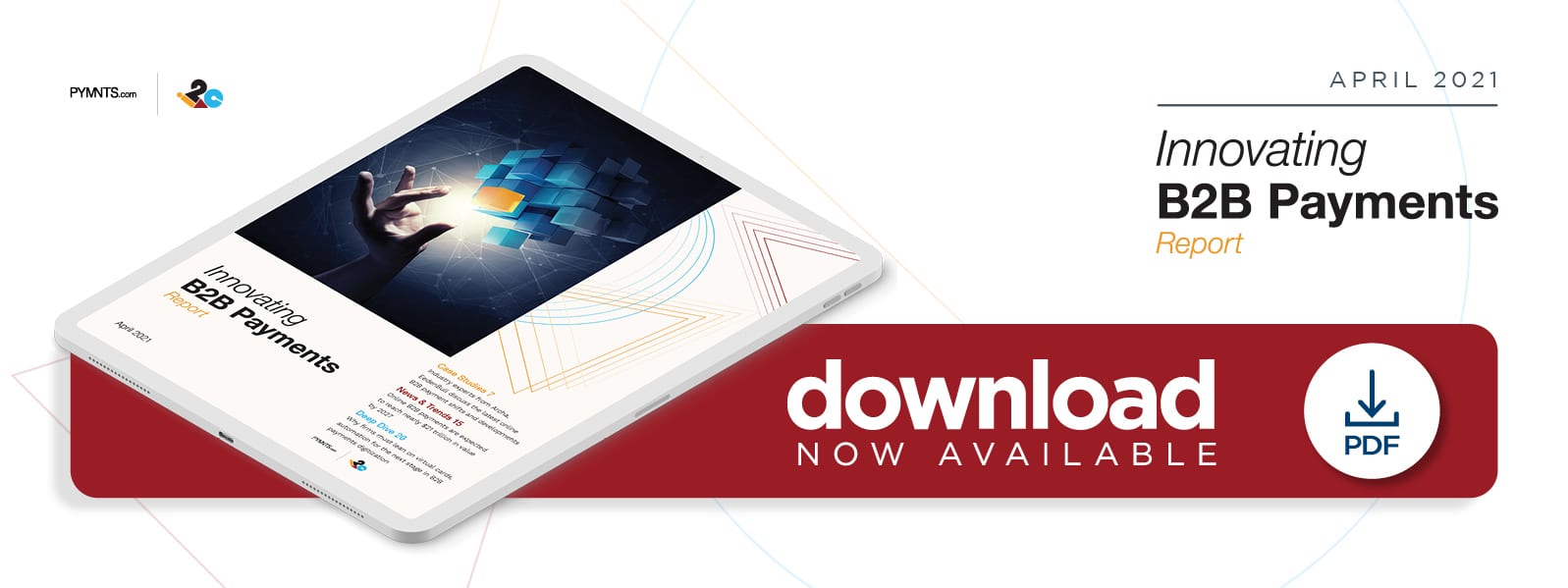EedenBull On Why The Time Is Now For Firms To Make The B2B Automation Switch


The way firms conduct their daily operations has changed markedly over the past year.
Shuttered brick-and-mortar offices and employees’ mass shifts to remote work have prompted companies to shuffle everything from how they hold morning meetings to how they pay their suppliers.
It is essential for businesses to examine how B2B payments are progressing regardless of the pandemic’s influence, Nicki Bisgaard, CEO of B2B payments focused FinTech EedenBull, said in a PYMNTS interview. The health crisis has certainly accelerated the space’s trend toward digitization, he explained, but it has not altered which B2B processes firms must update or why innovation is necessary. Companies still need to focus on swiftly and efficiently moving money in a data-driven digital world, meaning global markets that were ahead in this regard before the ongoing crisis — including that of the Nordics, which largely eliminated paper check payments decades ago — are still one step ahead.
“We have a whole generation of people [who have] never seen a check, who do not know what it is,” he said, speaking of the Nordic market. “So, their challenges are slightly different than from a market such as the U.S., perhaps, where checks are still being used in a B2B environment. Now, of course, if you are in a check environment, then the market digitalization becomes even more pressing because you have now got people sitting in their kitchens unable to write checks and touch checks. So, I think we are seeing an acceleration of developments that we would have seen anyway — markets where checks are still kind of the name of the game would at some point have [had] to wake up and move on.”
This means that businesses and, by extension, their banking and payments partners, including EedenBull’s payment processor, i2c Inc., must focus on stripping out the frictions that are ingrained in typical B2B payment processes. Adopting technologies that can enable digital transactions as well as developing supporting systems that can add insights, security and visibility into businesses’ spending is thus critical for companies.
Keeping Pace With B2B Digitization’s Acceleration
The pandemic has accelerated the need for many businesses to upgrade their domestic and cross-border B2B payment processes with speed and efficiency in mind. Bisgaard said that many companies are now seeking the same kind of seamlessness for their business transactions that they have enjoyed for years as private consumers.
“What we are now seeing is much more attention from new players looking to move into B2B payments and creating more of a momentum in development in that space,” he said. “But [what] we are also seeing, and that is regardless of the pandemic, is this kind of consumerization of commercial payments. We have had developments in the consumer space [such as] mobile wallets, for example, tokenization of cards and what have you, representation of cards in your watches [as well as in] your mobile wallets. People are expecting the same payment experience when they act on behalf of the business as they do as a consumer.”
Making these changes to their overall payment processes is not necessarily easy for companies, however. Businesses must be sure to innovate not just their payments but also all the surrounding processes that run parallel with these transactions, Bisgaard said, as many of them are still manual and thus more prone to friction.
“I think in terms of kind of empowering people to do their work properly, I think the approvals processes in many instances are a nightmare,” he said. “I think the accounting processes are a nightmare because they are hugely manual, and then that leads us to the payment aspect of it.”
He added that these frictions are driving the adoption of tools such as virtual cards among businesses as they can enable payments to be managed on one platform. This can offer businesses more transparency, with single-use virtual cards being particularly useful for enabling speedier and more secure transactions. These cards must be carefully configured to ensure that funds are being sent to their intended recipients when employees place orders, however.
Squeezing Out Maverick Spenders
Payments speed and efficiency are important for firms, but Bisgaard said that simply making sure payments are being made to the appropriate recipients remains one of firms’ biggest priorities. Many companies have carefully cultivated lists of approved suppliers, he explained, but employees may not always consult these lists when making orders — and this can prove costly to firms.
“I think maverick spend, by the way, is a significantly underrated problem — people buying stuff from noncertified and nonpreferred suppliers,” Bisgaard said. “There [is] a lot of research flowing around which would suggest that … in [as] much as 30 percent to 40 percent of the instances, even if a company has a preferred supplier [or] certified supplier, employees will go and buy what they are meant to buy from … somewhere else. So, there are a number of issues related to [that], and … the processes if you buy from a nonpreferred supplier are more cumbersome as well. So [there are a] number of areas where I think maverick spend needs to be addressed in a much more intelligent way going forward, and [that] ties back into who is buying what from where and ensuring that [approved purchases are] happening.”
Integrating tools that can add spending restrictions and safeguards could be key to solving this problem and grant businesses the control they need as they continue automating their B2B payment processes. Businesses must focus on solving these and other long-existing pain points as the shift to a digital B2B world keeps accelerating.
